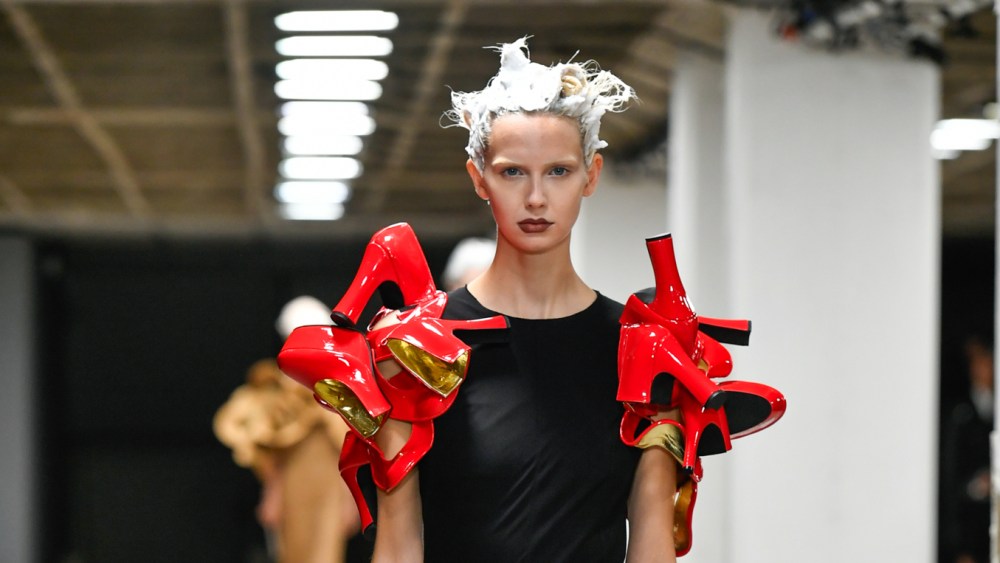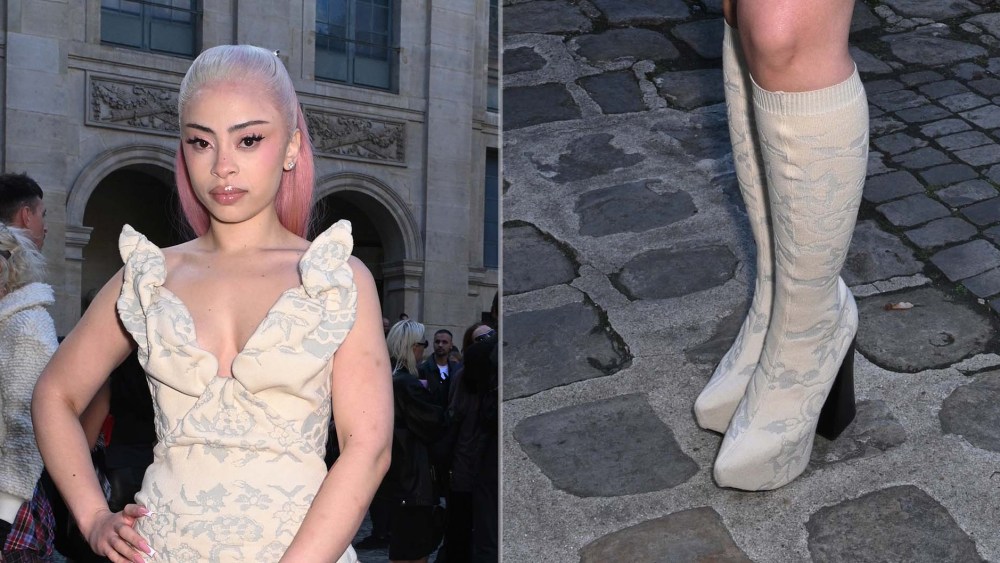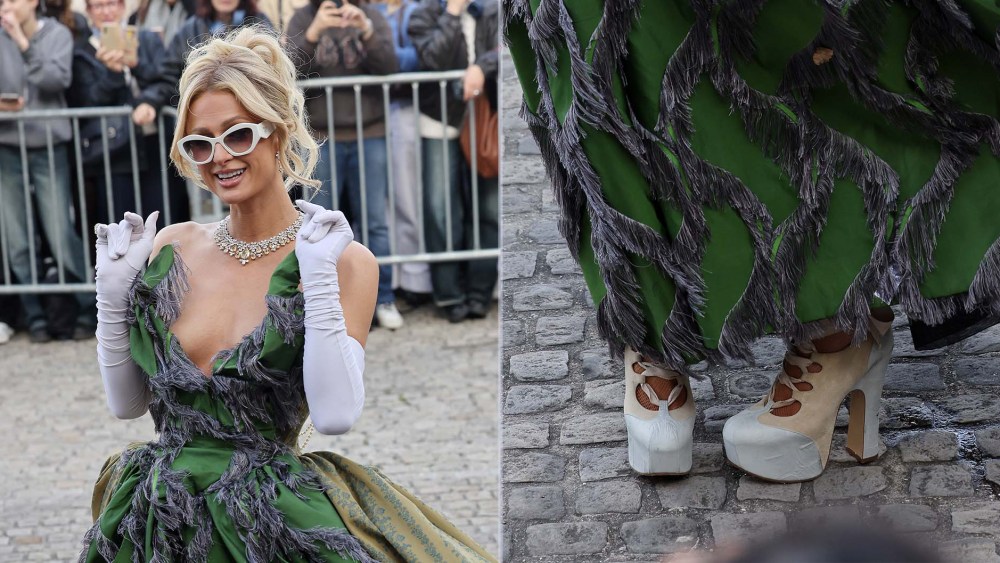
Things aren’t always what they seem in the world of Junya Watanabe, who transformed the most banal of household objects into thought-provoking — and sometimes jarring — creations.
He turned a cluster of stainless steel spoons into rounded, armor-like shoulders on a crinkly, silvery minidress, and twisted a stack of gold forks into a boa that curved around a stretchy black dress. Clothes hangers doubled as straps on a long trenchcoat and appeared — once again — holding up a tea dress on a model’s back.
A tangle of black ribbons swirled, cloud-like, around a dark top paired with flamenco pants, while broken-up red patent leather shoes formed the sleeves of the black gown with Belle Époque flair that opened the show. Umbrellas formed the hoop-like skirts of a white broderie anglaise-edged dress.
Was it an exercise in “make do and mend,” the British government’s advice to citizens during World War II? An appeal to upcycle? Or perhaps it was a comment on these unstable times, when refugees on rubber rafts are trying to cross the English Channel, and bombs are destroying swathes of Eastern Europe and the Middle East?
Many people have become used to living with the remains of things, the scraps of what used to be a normal life.
Watanabe’s collection became more poignant as it unfolded. The patent leather shoes and golden forks gave way to silhouettes made from tights and broken-up suitcases, and stretchy dresses stuffed with big triangle, circle and helical spring shapes.
What were the dresses hiding? Where were the models, who carried little white cards with a few words describing their outfits, going?
For Watanabe, who’s no stranger to jutting, geometric constructions, upcycling and abstract designs, it wasn’t that deep. In his liner notes, the designer described the show as “extraordinary art born from the everyday,” and said his approach to making clothes was simply different this time around.
“By treating ready-made items — objects originally intended for specific purposes — as one of the materials, I recontextualized them, and explored forms that could never be achieved through conventional methods,” he said.
Sigmund Freud said, “Sometimes a cigar is just a cigar.” But what about a spoon, a broken shoe or a clothes hanger? Thanks to Watanabe’s wild imagination, the possibilities are endless.
#Junya #Watanabe #Spring #Ready #Wear #Runway #Fashion #Show #Collection #Review






